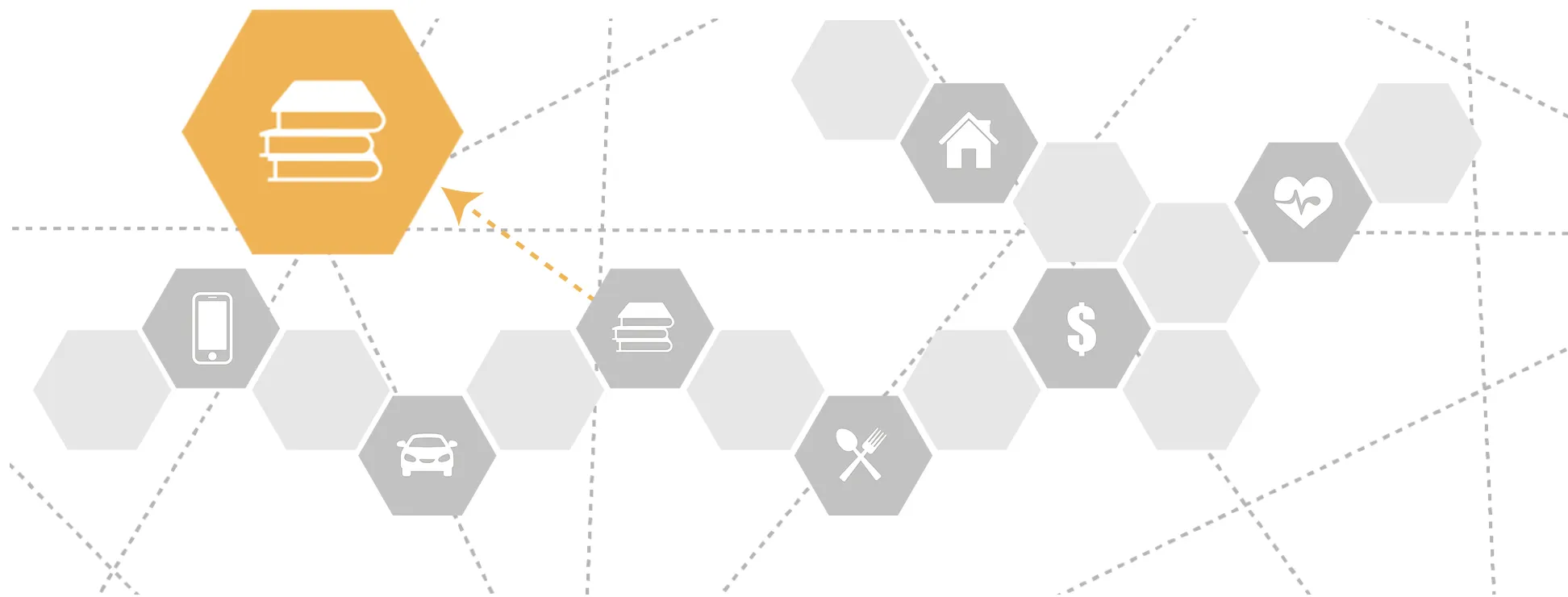
|
Housingclick to view |

|
Health Careclick to view |

|
Child Care and Educationclick to view |

|
Technologyclick to view |

|
Foodclick to view |

|
Taxesclick to view |

|
Transportationclick to view |
||
Broader Costs Of Limited Child Care and Education Options
Not being able to afford quality child care, access a quality K–12 education, or afford higher education has consequences not only for ALICE families, but also for the strength and stability of the local economy and the future of the wider community:
- Lost business productivity: The lack of adequate child care or early education may result in a parent’s absenteeism and tardiness at work, and low productivity and/or quality of customer service. Businesses lose an estimated $4.4 billion annually due to absenteeism caused by child care breakdowns, and 65 percent of employees with children see their work schedules affected by child care issues an average of 7.5 times in a six-month period.65
- Long term societal costs: Education at all levels provides a basis for lower crime rates, improved physical health, and increased future earnings. These translate not only to lower public expenditures in criminal justice, health care, and social services, but also to healthier communities.66
- Lost revenue and savings: When high-quality educational opportunities help ALICE families — especially those who are Black or Hispanic — achieve greater financial success, the entire economy benefits. For example, raising the 2015 national high school graduation rate to 90 percent would have generated a $3.1 billion increase in earnings, a $504 million increase in federal tax revenues, an additional $5.7 billion contribution to the GDP, and $16.1 billion in health care savings.68 In addition, a study by McKinsey estimated that closing the educational income gap between White and Asian students and Black and Hispanic students for 15 years would have increased the GDP a decade later by 3 to 5 percent.69
- Higher costs for all to cover defaulted student loans: In 2016, taxpayers contributed almost 1.5 billion to institutions where less than 25 percent of graduates earned more than the average high school graduate. Of this amount, $33 million was campus-based aid, $853 million was from grants, and $610 million was student loans.70
- Lost business productivity: The lack of adequate child care or early education may result in a parent’s absenteeism and tardiness at work, and low productivity and/or quality of customer service. Businesses lose an estimated $4.4 billion annually due to absenteeism caused by child care breakdowns, and 65 percent of employees with children see their work schedules affected by child care issues an average of 7.5 times in a six-month period.65
- Long term societal costs: Education at all levels provides a basis for lower crime rates, improved physical health, and increased future earnings. These translate not only to lower public expenditures in criminal justice, health care, and social services, but also to healthier communities.66
- Lost revenue and savings: When high-quality educational opportunities help ALICE families — especially those who are Black or Hispanic — achieve greater financial success, the entire economy benefits. For example, raising the 2015 national high school graduation rate to 90 percent would have generated a $3.1 billion increase in earnings, a $504 million increase in federal tax revenues, an additional $5.7 billion contribution to the GDP, and $16.1 billion in health care savings.68 In addition, a study by McKinsey estimated that closing the educational income gap between White and Asian students and Black and Hispanic students for 15 years would have increased the GDP a decade later by 3 to 5 percent.69
- Higher costs for all to cover defaulted student loans: In 2016, taxpayers contributed almost 1.5 billion to institutions where less than 25 percent of graduates earned more than the average high school graduate. Of this amount, $33 million was campus-based aid, $853 million was from grants, and $610 million was student loans.70
Sources
65
Child Care Aware. (2018). The US and the high cost of child care: 2018. Retrieved from http://usa.childcareaware.org/advocacy-public-policy/resources/research/costofcare/
Garcia, E. (2015, June 17). Inequalities at the starting gate. Economic Policy Institute. Retrieved from http://www.epi.org/publication/inequalities-at-the-starting-gate-cognitive-and-noncognitive-gapsin-the-2010-2011-kindergarten-class/
66
Child Care Aware. (2018). The US and the high cost of child care: 2018. Retrieved from http://usa.childcareaware.org/advocacy-public-policy/resources/research/costofcare/
Center on Society and Health. (2015, February 13). Why education matters to health: Exploring the causes. Virginia Commonwealth University. Retrieved from https://societyhealth.vcu.edu/work/the-projects/why-education-matters-to-health-exploring-the-causes.html https://www.aecf.org/resources/overstressed-kids/
67
American Psychological Association. (2019). Education and socioeconomic status. Retrieved from https://www.apa.org/pi/ses/resources/publications/education
68
Alliance for Excellent Education. (2019). The graduation effect. Retrieved from http://impact.all4ed.org/
69
McKinsey & Company. (2009). The economic impact of the achievement gap in America’s schools. Retrieved from http://www.p12.nysed.gov/accountability/AOC/resources/articles/achievement_gap_report.pdf
70
Matthiessen, C. (2019, January 9). Why are so many college students returning home? GreatSchools.org. Retrieved from https://www.greatschools.org/gk/articles/dropping-out-of-college-record-numbers/
Itzkowitz, M. (2017). A risky bet: billions in tax dollars fund lowest performing institutions. ThirdWay.org. Retrieved from https://www.thirdway.org/memo/a-risky-bet-billions-in-tax-dollars-fund-lowest-performing-institutions

